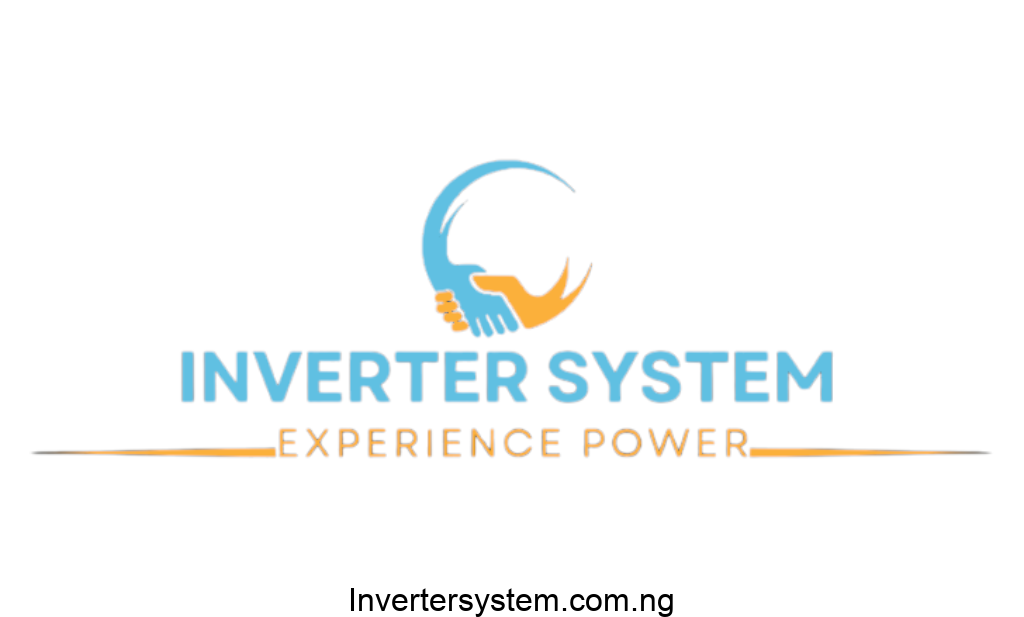How Solar Inverters Help in Grid Stability and Resilience
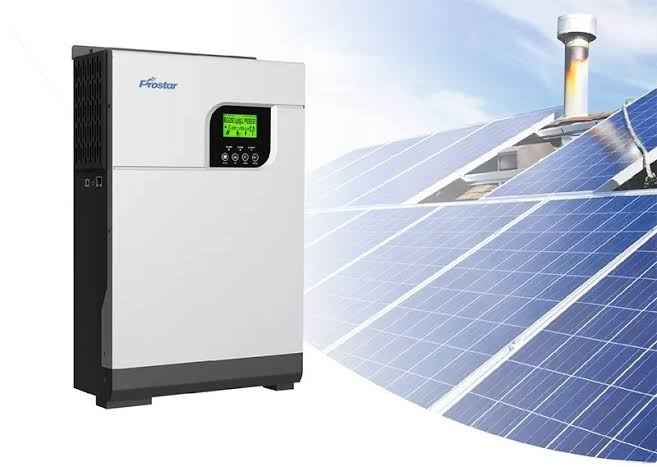
As the world shifts towards cleaner and more sustainable energy sources, solar power has become a significant player in energy generation. With increased adoption, however, comes the challenge of integrating solar energy into the existing power grid without compromising stability or resilience. Solar inverters, which serve as the bridge between solar panels and the grid, play a vital role in this integration. These devices not only convert solar energy into usable electricity but also help in maintaining grid stability and resilience, two essential aspects for the uninterrupted flow of electricity. In this article, we will explore in detail how solar inverters contribute to grid stability and resilience, the technologies behind them, and the challenges they help overcome.
Grid Stability and Its Importance
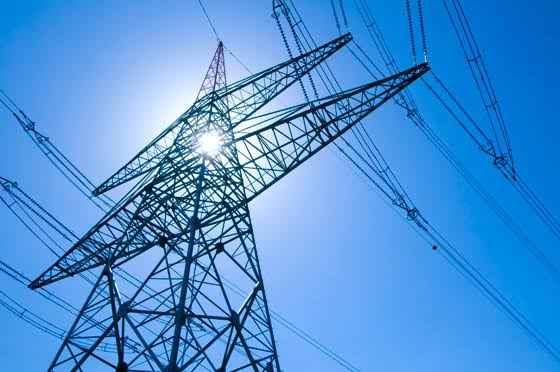
In the context of energy systems, grid stability refers to the ability of the power grid to maintain a steady voltage and frequency despite changes in electricity demand or supply. When the grid is stable, electricity flows smoothly from power plants (or other energy sources, like solar panels) to consumers without disruption. However, maintaining this balance becomes more complex when integrating renewable energy sources, such as solar power, which are subject to variability. Fluctuations in solar power production due to weather conditions can challenge the grid’s ability to remain stable. In extreme cases, these fluctuations could lead to blackouts or power surges.
Maintaining grid stability is crucial for two main reasons:
- Reliable Power Supply: A stable grid ensures that electricity is consistently available to all users.
- Protecting Equipment: Instabilities, like voltage spikes or drops, can damage both residential and industrial equipment.
Solar Inverters: The Backbone of Solar Energy Systems
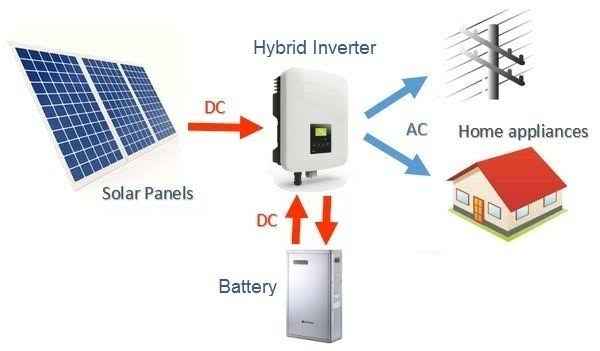
Solar inverters are the key components that allow solar energy to be fed into the grid. These devices convert the direct current (DC) electricity generated by solar panels into alternating current (AC) electricity, which can be used by homes, businesses, and the power grid itself. However, the role of inverters extends far beyond simple conversion. Modern inverters, especially smart inverters, are designed to provide advanced support for grid stability by managing voltage and frequency levels and offering reactive power support.
How Solar Inverters Support Grid Stability

1. Voltage Regulation
One of the most important functions of solar inverters in grid stability is voltage regulation. The power grid must maintain a consistent voltage level to function properly. When solar power is integrated into the grid, variations in sunlight intensity (due to clouds or time of day) can cause fluctuations in the amount of power being generated. Without proper regulation, these fluctuations could cause voltage imbalances.
Smart solar inverters are equipped with voltage ride-through capabilities, allowing them to continue operating during minor voltage dips or surges. These inverters can adjust their output to help maintain a consistent voltage level in the grid, even when the energy produced by solar panels fluctuates.
2. Frequency Regulation
The grid operates at a specific frequency, typically 50 Hz or 60 Hz, depending on the region. Maintaining this frequency is essential for the proper functioning of electrical devices. When the grid frequency deviates from this standard, it can lead to equipment malfunctions or power outages.
Solar inverters, particularly grid-forming inverters, help in regulating the grid frequency by adjusting their power output based on the current grid conditions. If the grid frequency drops (due to a surge in demand or a drop in supply), the inverter can increase its output to help stabilize the frequency. Conversely, if the grid frequency is too high, the inverter can reduce its output.
3. Reactive Power Support
Reactive power is essential for the transmission of electricity across the grid. It helps maintain voltage levels, which ensures that power can be transmitted efficiently over long distances. Without sufficient reactive power, voltage levels can drop, leading to instability.
Solar inverters provide reactive power support by either absorbing or injecting reactive power into the grid. This helps stabilize voltage levels and improves the overall efficiency of the grid. Modern inverters can even operate autonomously, making real-time adjustments based on the grid’s needs.
4. Anti-Islanding Protection
When the grid experiences a disturbance, such as a blackout, it is crucial that distributed energy resources (DERs) like solar panels stop feeding electricity into the grid. This ensures that workers can safely repair the grid without the risk of being electrocuted by energy still flowing from solar installations. Anti-islanding protection is a feature of solar inverters that automatically shuts down the inverter when a grid disturbance is detected. This feature prevents the formation of “islands” of live energy that could endanger workers and equipment.
Solar Inverters and Grid Resilience
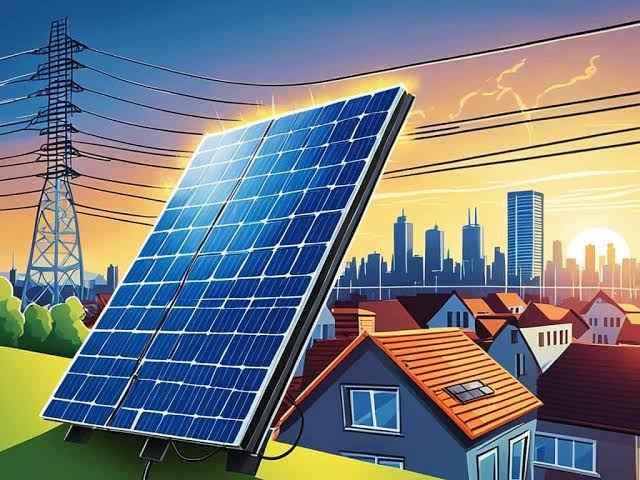
Grid resilience refers to the ability of the grid to recover from disturbances, such as power outages, equipment failures, or natural disasters. As renewable energy sources, including solar power, become more prevalent, ensuring grid resilience becomes even more critical.
1. Handling Intermittency of Solar Power
Solar energy production is inherently variable. Clouds, storms, and the setting sun can all reduce the amount of electricity produced by solar panels. This intermittency poses a challenge to the grid, as the supply of electricity needs to constantly match demand.
Solar inverters with energy storage capabilities (such as those paired with battery systems) help address this issue by storing excess energy produced during periods of high sunlight. This stored energy can then be released during periods of low sunlight, ensuring a continuous and stable power supply. These systems contribute significantly to grid resilience by providing backup power when solar generation is low or when the grid experiences a disturbance.
2. Mitigating Grid Disturbances
During times of grid instability, such as voltage dips or frequency deviations, solar inverters play a crucial role in mitigating grid disturbances. Unlike traditional inverters, which may shut down during grid disturbances, smart inverters are designed to stay online and continue operating under abnormal grid conditions. This ability to “ride through” disturbances ensures that solar power systems can continue to provide electricity even during grid faults, helping the grid recover more quickly.
3. Blackout Protection and Critical Load Support
In the event of a major grid failure or blackout, solar inverters with blackout protection can continue providing power to critical loads (such as hospitals, emergency services, or essential home appliances). This capability is particularly valuable in regions prone to frequent blackouts or natural disasters, where grid resilience is paramount. Solar inverters integrated with battery storage systems can operate in island mode, disconnecting from the grid and supplying power solely to the local system during an outage.
Solar Inverter Technologies That Improve Grid Stability and Resilience
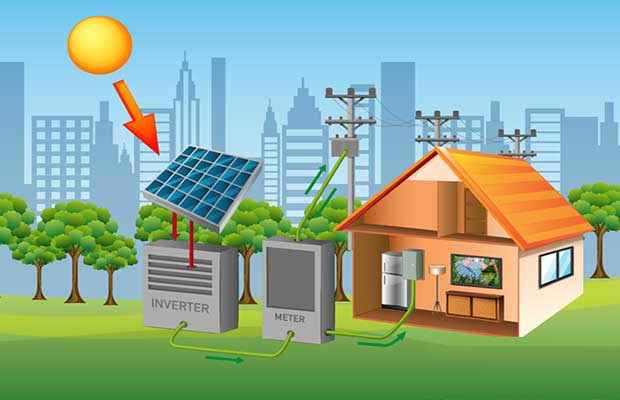
1. Smart Inverters
Smart inverters are equipped with advanced grid-support features that go beyond basic power conversion. They are capable of dynamic adjustments to voltage and frequency, reactive power support, and remote monitoring and control. These features make smart inverters ideal for managing the complexities of renewable energy integration into the grid. Smart inverters for grid stability are becoming a standard in new solar installations due to their ability to enhance both grid stability and resilience.
2. Grid-Forming vs. Grid-Following Inverters
There are two main types of inverters used in solar energy systems: grid-forming inverters and grid-following inverters.
- Grid-forming inverters: These inverters can generate their own voltage and frequency reference, making them particularly useful in microgrid and off-grid applications. They help maintain grid stability by acting as a reference for other generators and inverters connected to the system.
- Grid-following inverters: These inverters sync with the existing grid’s voltage and frequency and adjust their output accordingly. They are commonly used in grid-connected solar systems and contribute to stability by ensuring that their output matches the grid’s needs.
Both types of inverters play an essential role in ensuring smooth integration of solar power into the grid.
Common Grid Stability Issues with Solar Power Integration
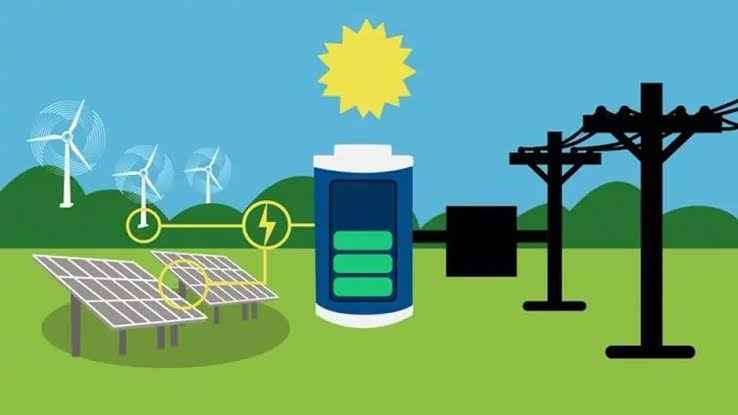
While solar power provides numerous benefits, it also introduces several challenges to grid stability. Grid stability issues with renewable energy arise primarily from the intermittency of solar energy and the difficulty in predicting power generation.
- Voltage Fluctuations: Solar power systems can cause voltage fluctuations in the grid, especially during periods of rapidly changing sunlight conditions. These fluctuations can lead to power quality issues and even equipment damage if not properly managed.
- Frequency Deviations: Large-scale solar installations can cause frequency deviations, particularly when there is a sudden loss of solar power generation (for example, when a cloud passes over a solar farm).
- Harmonics: Inverters can introduce harmonics into the power system, which are distortions in the electrical waveform. Harmonics can reduce power quality and cause inefficiencies in the grid.
Tools and Calculators for Managing Solar Inverter Grid Stability
To address the complex challenges of grid stability, engineers and grid operators rely on a variety of solar inverters and grid stability calculators. These tools allow for precise calculations of power flow, voltage regulation, and frequency control, helping to optimize the integration of solar energy into the grid. Additionally, educational resources such as solar inverters and grid stability PPT presentations provide valuable insights into best practices for managing renewable energy systems.
Future Developments in Solar Inverters for Grid Stability
The future of solar inverters is bright, with new technologies emerging that will further enhance grid stability and resilience. One promising area of development is inverter-based resource stability for large-scale solar farms. These utility-scale systems require advanced inverters that can handle the complexities of integrating vast amounts of solar energy into the grid. As solar technology continues to evolve, we can expect even greater improvements in solar PV grid impact and the role of inverters in maintaining grid stability and resilience.
Solar Inverter Innovations for Enhanced Grid Stability
As solar energy continues to grow in its contribution to the energy mix, inverter technology is evolving to meet the demands of larger, more complex power systems. Several key innovations are being developed to improve how solar inverters interact with the grid, with a focus on minimizing disruptions and enhancing overall grid stability.
1. Grid-Supporting Inverters
A new generation of grid-supporting inverters is being designed to actively participate in the regulation of voltage and frequency. These inverters are not just reactive but also proactive in providing the necessary corrections to keep the grid stable. For example, if there is a sudden drop in power supply due to a cloud passing over a solar farm, grid-supporting inverters can quickly adjust their output to compensate for the loss, helping to prevent voltage and frequency instability.
2. Battery-Integrated Inverter Systems
Battery-integrated inverters are another promising advancement. By pairing solar inverters with energy storage systems (such as lithium-ion batteries), these setups can provide backup power during periods of low solar production and even during grid disturbances. This combination ensures that solar power continues to support the grid, even when sunlight is insufficient. The ability to store excess energy and release it when needed significantly enhances grid resilience, allowing the grid to withstand and recover from unexpected disruptions more effectively.
3. Virtual Power Plants (VPPs)
Another exciting development is the concept of virtual power plants (VPPs), where multiple distributed energy resources (like rooftop solar systems) are aggregated and managed as a single unit. VPPs can provide grid services, such as balancing supply and demand, in real time. Solar inverters play a critical role in these systems by adjusting their output to meet grid needs based on signals from the grid operator. This level of coordination increases both grid stability and resilience, as the grid can tap into a large pool of resources to maintain balance.
Grid Stability Issues with Renewable Energy and Mitigation Techniques
The increasing penetration of renewable energy sources like solar power presents several grid stability issues that must be addressed to ensure reliable electricity delivery. Solar inverters are at the forefront of mitigating these challenges:
- Intermittency of Renewable Energy: One of the primary issues with renewable energy is its variability. Solar power generation depends on the weather and time of day, making it difficult to predict how much energy will be available at any given moment. Solar inverters with energy storage integration and frequency regulation capabilities help smooth out these fluctuations by storing excess energy and releasing it when demand is high or solar generation is low.
- Overvoltage in Low-Load Conditions: During periods of low electricity demand (such as in the middle of the day when solar generation is high but consumption is low), the grid can experience overvoltage. This can lead to inefficiencies and even damage to grid equipment. Smart inverters can help manage this by curtailing solar production or providing reactive power support to absorb the excess voltage.
- Grid Synchronization: Another challenge is ensuring that distributed solar systems remain synchronized with the main grid. If solar inverters are not properly synchronized, they can cause disturbances in the grid’s voltage and frequency. Advanced grid-synchronizing inverters can maintain precise synchronization with the grid, helping to avoid these issues.
- Power Quality Issues: Harmonics and other power quality issues can arise when large numbers of solar inverters are connected to the grid. These issues can distort the electrical waveform, leading to inefficiencies and potential damage to electrical equipment. Modern inverters are equipped with active harmonic filtering technology, which helps to reduce these distortions and improve overall power quality.
Solar Inverters and the Future of Grid Resilience
As we look to the future, the role of solar inverters in grid stability and resilience will only continue to grow. With the increasing push towards decentralization and renewable energy adoption, the grid must evolve to handle new challenges. Smart grid technologies, inverter-based systems, and the integration of energy storage solutions are key to building a more resilient and adaptable energy network.
1. Decentralized Energy Systems
One of the most significant trends in energy generation is the move towards decentralized energy systems. Instead of relying solely on large, centralized power plants, more homes and businesses are installing their own solar power systems. Solar inverters play a crucial role in these systems by ensuring that the energy generated by individual solar installations can be safely and efficiently fed into the grid. As more decentralized systems come online, inverter technologies will need to become even more sophisticated to manage the increasing complexity of the grid.
2. Microgrids and Islanding Capabilities
Microgrids, which are smaller, localized grids that can operate independently of the main grid, are becoming an important part of the energy landscape. Solar inverters with islanding capabilities are essential for these systems, as they allow the microgrid to continue functioning even when the main grid goes down. This enhances resilience, particularly in areas prone to natural disasters or frequent outages.
3. Artificial Intelligence and Predictive Algorithms
As the grid becomes more complex, artificial intelligence (AI) and predictive algorithms will play a critical role in managing grid stability. AI can analyze data from thousands of solar inverters in real time, allowing for predictive maintenance and optimization of energy flow. Machine learning algorithms can predict when and where grid disturbances are likely to occur, allowing inverters to make preemptive adjustments to maintain stability.
Conclusion
Solar inverters are not just conversion devices but are at the heart of the growing renewable energy infrastructure. They play a critical role in maintaining both grid stability and resilience, ensuring that solar power can be integrated smoothly and efficiently into the existing power grid. By managing voltage, frequency, and reactive power, and by providing advanced features like anti-islanding protection, smart grid integration, and energy storage support, solar inverters help to create a more reliable and resilient energy system.
As the adoption of solar power continues to rise, the importance of inverter technology in maintaining a stable and resilient grid will only increase. Through ongoing innovations and advancements in smart inverter capabilities, battery storage integration, and grid-support functions, solar inverters will continue to play a pivotal role in the transition towards a cleaner, more sustainable, and more resilient energy future.
Now that you have a deeper understanding of how solar inverters contribute to grid stability and resilience, it’s essential to consider the type of inverter technology you may need for your solar installation to ensure compatibility with the grid, especially as the energy landscape continues to evolve.
